
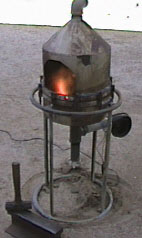
After visiting with the Phoenix "Valley Metal" members at a recent get together, I decided to build this small forge for heat treating steel for some of the work that I do. I shall show the construction of this forge; but give few dimensions. This is because everything was put together from scrap parts I had in my junk pile. An old air compressor tank could be modified. Or the forge could be made up from rolled steel. The body of my forge is 1/16" thick steel plate which has been rolled and welded.
Here is the forge at its first burn-in to burn off paint and test it:


This is a close-up of the hood:
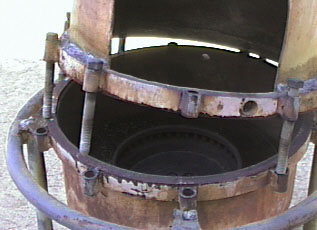
The hood attaches to the forge pan by bolts as shown here. The bolts may or may not be fastened down tight.
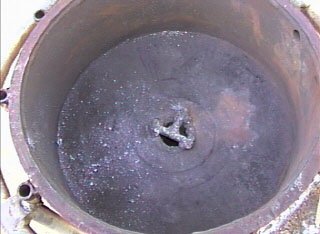
The inside of the pan looks like this. I welded a steel "T" over the air inlet to prevent large coals from falling down into the tube. I was very concerned about the affects of the hot fire on the pan bottom.
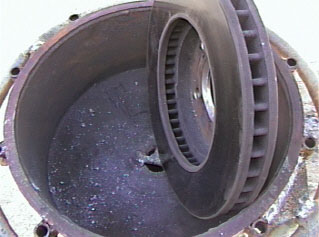
So....I decided to line it with an automobile brake rotor. The plan was to put a very thick layer of steel between the hot coals and the forge pan itself. You will notice how the rotor fins will help insulate the pan from direct heat. These rotors are very heavy and thick. You can probably find such a brake rotor on your neighbor's car. A brake shop gave me mine. Gave...as in free!
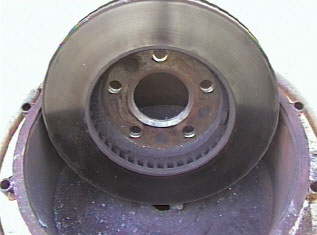
This is another view of the rotor showing the center depression and holes.
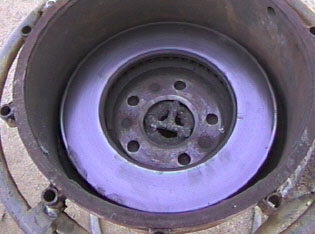
This image shows the rotor in position at the bottom of the forge pan. Notice that it centers over the air inlet tube.
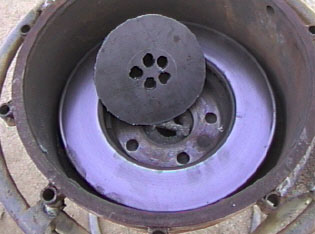
To protect the grate "T" on the pan bottom, I roughly cut a 6" diameter disc from 1/4" steel plate. Five holes were burned through for air flow. This steel plate will just fit in to the depression of the brake rotor.
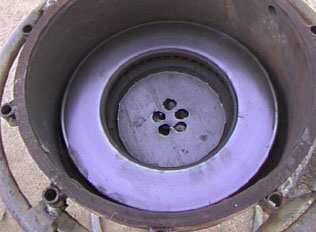
And, finally, here is everything in position to protect the forge pan bottom from the intense heat of the forge when in operation. Notice the air vent holes all line up.
I hope this info will be of use to anyone else desiring to build their own small forge.
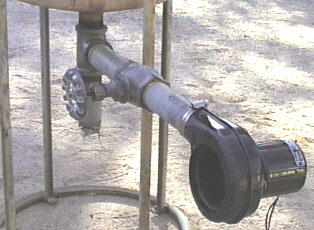
I had a 2" brass gate valve in my junk pile and chose to use it rather than a speed control on the motor. This type of air flow control works great! It is fully adjustable from closed to wide open.

I then decided I would rather be able to see inside the forge as I adjusted the air flow. So...I went to the scrap pile for a few more parts. This blower arrangement allows me to see the fire and adjust the air without even bending.
Until I make a flip valve at the bottom on the ash tube, I am sealing it with a wet rag.